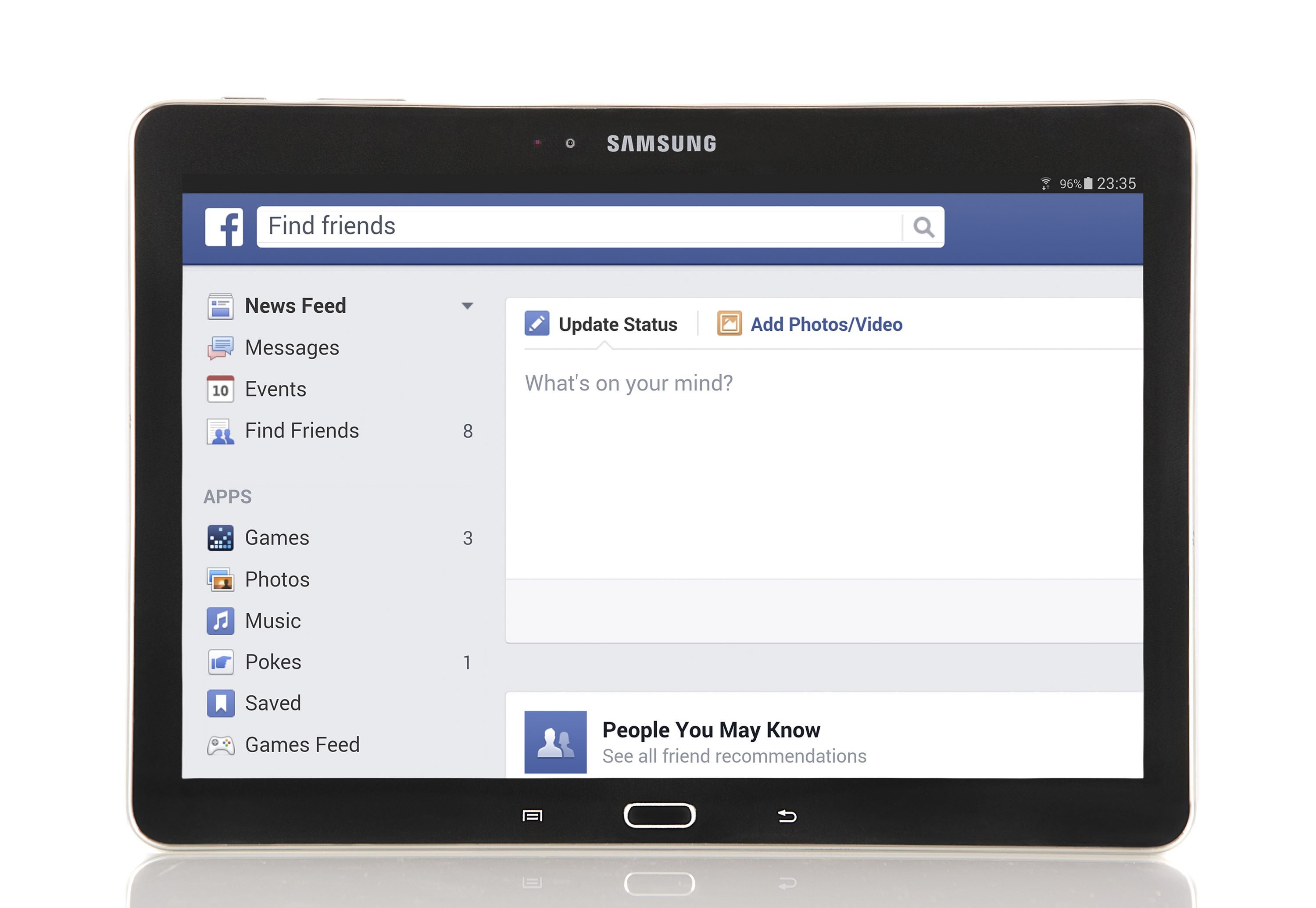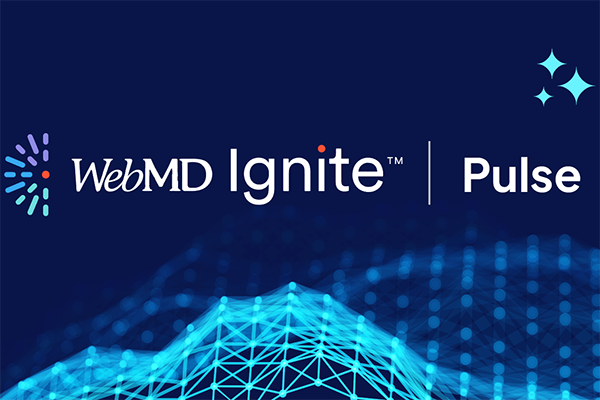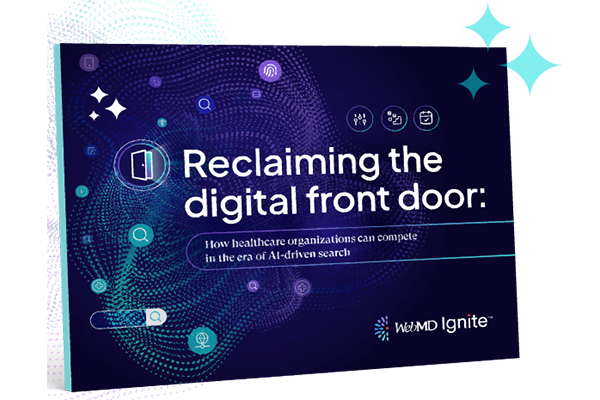Facebook Ad Targeting for Healthcare Marketers

Categories: health plans, health systems, healthcare organizations, associations
Editor's Note: This blog was published prior to the transition to WebMD Ignite.
You’ve decided to run a Facebook campaign — congratulations! Ideas for images and ad copy are swirling around in your head. You are ready for people to see, read, and interact with your ads.
Now you have to decide who you’re trying to reach. Who are they? What do they look like? What makes them different from other people? Once you have answered these questions, those people become your target audience.
With over 2 billion people using Facebook every month — and 1.37 billion daily active users — Facebook allows you to reach the people who are right for your business. Targeting is the foundation of a successful Facebook campaign; it lays the groundwork for the audience that sees your ad. It also gives you a profile around which to focus your creative efforts.
Google vs Facebook Ad Targeting in Healthcare
When searching on Google, a user has intent. They went to Google with the intention of finding something specific. Facebook is passive; users are checking in to see how their friends are doing, take a quiz, and looking at clever decorating ideas. They don’t know what they are going to find every time they open Facebook.
The best analogy we can give for Facebook targeting is casting a fishing rod, as opposed to a net. Casting a wide net will net you plenty of fish, but only a few will be the variety you want. On the other hand, targeted Facebook ads are like choosing the right bait and finding exactly where the fish are jumping: With a little bit of preparation, you stand a better chance of catching exactly what you need.
That’s the same principle we take with Facebook advertising; we are trying to catch people we predict will click, convert, or interact with your ad. We're looking for people who match a targeting profile that we create. That profile can be as general or as specific as you need it to be.
With that said, let’s explore our targeting options.
1. Facebook demographic targeting options
Demographic information provides your basic bread and butter targeting. It covers several areas, including:
- Age
- Gender
- Geographic location
- Education
- Employment
- Relationship status
- Family connections
- Spoken languages
Most of these targeting options, like age and gender, are self-reported information. On the other hand, options like geographic location use location data and self-reported information to cover anyone currently in your specific city or area. This includes people who updated their city in their profile or anyone determined to be in that location based on device and connection information.
If we’re building a general profile for a mammography campaign, we could use demographic information to target women over the age of 40 who live within 20 miles of Atlanta, Georgia. That’s going to cast a very wide net. We could see hundreds of thousands of women falling within those parameters. If we’re trying to reach the largest population we can, this is a great option. However, targeting unqualified leads often results in many impressions and few click-throughs, which can result in wasted ad spend. Consequently, we typically recommend using demographic data only as a jumping-off point.
2. Facebook detailed targeting options
Facebook associates every user with multiple interests based on their online behavior. In fact, you can see which interests are associated with you by viewing your Ad Preferences panel. Detailed targeting allows healthcare marketers to target users based on how they behave, allowing them to laser-focus on the patients and customers that will be most receptive to their messaging. This type of targeting can be broken down based on interests, demographics, and behavior.
INTEREST TARGETING
Interest targeting is based on how a user interacts with Facebook and its content: from what they’ve shared on their timeline, to ads they’ve clicked on, to the apps they have used. You can start by searching for relevant interests on the interest targeting interface, and later choose from “suggested interests” which are generated by Facebook. These interests are often strongly associated with your chosen interests, helping you expand your search. You can even choose subcategories of interests — for instance, if a patient is interested in “physical fitness,” you could narrow this down to running, biking, weight-lifting, and more. These categories can help you find people who may be at risk for specific health conditions.
For example, we can target adults who have liked The American Heart Association; maybe they would be likely to interact with a cardiology ad. We would also want to target other subcategory interests, like hypertension awareness or heart disease awareness. The more categories added to interests, the higher the potential targeting reach becomes; it is inclusive rather than exclusive.
DEMOGRAPHICS & BEHAVIORS
Demographics and behaviors round out the trifecta that makes up Detailed Targeting in Facebook. They utilize third party marketing data from companies like Acxiom, Datalogic, and Experian. These companies track consumer purchasing behavior and then match consumers to Facebook users.
Under Detailed Targeting, demographics are additional details beyond what might be provided normally on a person’s timeline — including whether or not they have children, their ethnic identity, or even their income level. This can be further broken down by their age group, profession, or industry.
Behaviors focuses more closely on purchases: charitable donations, residential profiles, and purchase behaviors, to name a few. There are thousands of behavior options, offering complete customization of the audience.
Using demographics and behaviors allows you to target users based on their off-Facebook habits, which can be more telling than what they actually share on their curated timeline. For example, women who purchase plus size clothing might be open to the idea of bariatric surgery but would cringe at the idea of sharing their clothing size on Facebook. Since demographics and behaviors directly correlate to a user’s actual lifestyle, they allow you to choose the most qualified customers, generating better quality leads.
3. Facebook targeting options for audiences
Audiences allow healthcare marketers to connect with potential customers through broad or specific targeting parameters. This targeting can help you meet many marketing goals, whether they revolve around patient acquisition, branding initiatives, or even recapturing patients that are at risk of leaving your health system. Let’s take a closer look at how audience targeting works.
CORE AUDIENCES
Core audiences allow healthcare marketers to reach a very precise set of consumers, even if those customers have never interacted with your hospital before. Core audience targeted uses five primary targeting areas:
- Location — This option will allow you to target people in a certain geographic area. Think countries, cities, and local communities. Narrowing your target market by location is very important to health systems, as they stand a better chance of recruiting new patients who live or work near their facility.
- Behavior — Behavior allows your health system to target consumers based on what they purchase, what they search for online, or how they use any of their internet-connected devices. This feature is often used to target people who search about certain medical conditions online.
- Demographics — Demographic information lets healthcare marketers narrow their audience based on age, gender, education, job title, and more. This can be essential for targeting patients that are at risk for certain health conditions.
- Interests — Interests help you find people based on their hobbies and similar interests. For example, if a patient is interested in parenting, they may be more likely to respond to ads about pediatric care.
- Connections — By using connections, you are able to target users who have liked your page and friends of those people who have liked your page. This form of ad targeting exponentially increases long-term potential reach, since each new fan acquired will grow your pool of people. We’ve found it’s typically best for brand awareness campaigns rather than appointment acquisition.
LOOKALIKE AUDIENCES
With a lookalike audience, we take a custom audience and find an audience with similar attributes. Lookalike audiences let you reach a new audience who is likely to be interested in your business because they are similar to existing customers. Once a custom audience is built, Facebook will build a blinded lookalike audience made up of users that have similarities with the audience you have provided.
For instance, think of a custom audience composed of patients who are at risk of a stroke. These patients are primarily diabetic smokers that are over the age of 60. While this population is at a high risk of stroke, they are not the only group at risk. With lookalike audiences, Facebook would slightly adjust the given criteria. For example, they could find smokers over the age of 60 who previously had cardiac-related disease. The larger the data set provided, the bigger opportunity Facebook has to find significant commonalities.
CUSTOM AUDIENCES
Custom audiences let us target people whose information we already have. A seed list of patient phone numbers or email addresses can be uploaded to Facebook, which will match them with known users. Facebook securely hashes the data and returns an estimated audience size, which is autotomized. It doesn’t tell you who you have matched – just a number of matches.
Instead of uploading a list of phone or email addresses, you can use a Facebook Pixel to identify people that have visited your website, or those who have visited specific pages within your website. When a user visits your website, Facebook will tag them and add them to a de-identified pool of people that you can target. This type of audience can grow over time based on your website traffic.
Custom audiences can be useful in retargeting existing patients or patients you haven’t seen in a while. Health systems could upload a hashed list of people who have not had a physical in over a year and launch a retention campaign to ensure they come back to the health system, for example.
Facebook must make at least 100 matches from the data set to compile an audience. Custom audience sizes depend on the quantity and quality of the seed list: larger lists lead to larger audiences, but only if it can match users. If a large majority of the data within your seed list your seed list is old, however, you might not have great success in finding matches.
Final thoughts
Now that we’ve covered the basics of Facebook targeting, it’s time to start creating. With so many options – especially for interests, demographics and behaviors — your creativity and analytical capabilities are the only limit. Dive deep into your data and think outside the box, using data analytics to inform the creative process. Remember to revisit these campaigns on a regular basis to ensure that they are performing well.




